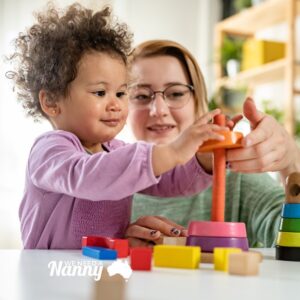The benefits of physical activity for child development, such as physical education classes, can have a multitude of benefits for child development. Physical Activity not only helps improve physical skills such as coordination, balance, and strength but also plays a crucial role in overall child development.
Through regular physical activity, children can experience cognitive development as well. Most children experience improved concentration, problem-solving skills, and even academic performance through physical exercise, according to research.
For most children, engaging in regular physical activity can lead to an overall sense of well-being. Exercise releases endorphins, which can help reduce stress and anxiety, and improve mood.
By incorporating physical activity into a child’s routine, parents and educators can help promote not only physical health but also mental and emotional well-being. The benefits of physical activity for child development are unmatched when it comes to their overall well-being. These Physical skills encourage children to stay active and participate in various physical activities to support their holistic development.
What Does Physical Activity Involve?
Engaging in physical activity involves using your muscles, expending energy, and burning calories. This can include any type of movement, whether it’s for leisure, transportation, work, or daily tasks around the house.
By incorporating physical exercise into your routine, you can establish and maintain healthy habits that contribute to overall well-being. Some popular forms of physical exercise include walking, cycling, and participating in various sports and activities.
These activities cater to individuals of all skill levels, making it accessible for everyone to engage in for fun and enjoyment. Regular physical activity not only promotes a healthy lifestyle but also helps in preventing various diseases and health conditions.
What is Meant by Child Development?
Child development refers to the process through which a child grows, learns, and acquires new skills and abilities as they progress through various stages of life. These aspects, which are interconnected, include physical, cognitive, emotional, and social development, and they all play a vital role in shaping a child’s overall well-being.
It encompasses the changes and advancements that occur from infancy through adolescence, encompassing milestones such as learning to walk, talk, and interact with others, as well as more complex cognitive and emotional developments.
Understanding child development is essential for parents, teachers, and nannies as it provides insight into how children learn and grow, and how to support and nurture their development effectively. It also helps in identifying any potential challenges or delays in development, allowing for early intervention and support to ensure children reach their full potential.
The Developmental Stages in Children
As children grow, they go through several developmental stages, and people often divide these stages into four age periods.
- The first stage is infanthood, which begins at birth and continues until the child becomes a toddler.
- The Second Stage is the toddler stage which is from 12 months up to five years.
- The next stage is childhood, which encompasses the early years of life up to early childhood and is further divided into preschool and middle childhood, which includes elementary education up to 5th or 6th grade.
- Adolescence, the last stage, is a more challenging period with a varied duration, but commonly defined as spanning from 13 to 18 years of age.
During early childhood, children undergo significant developmental changes as they continue to grow and learn. This period is crucial for their cognitive, emotional, and social development. It is a time when children begin to explore the world around them, develop language skills, and form relationships with others.
Early childhood is also a time when children develop a sense of independence and autonomy, as they become more capable of performing tasks independently.
As can be concluded, child development is a complex and multifaceted process encompassing various aspects of a child’s growth and maturation.
A combination of genetic, environmental, and cultural factors will influence these changes, and they play a crucial role in shaping a child’s overall well-being and future success. Understanding the intricacies of child development is essential for parents, teachers, and caregivers to provide the necessary support and guidance to help children thrive and reach their full potential.
How Much Physical Activity is Recommended for Children
Children should engage in at least 60 minutes of physical activity every day to promote their overall health and well-being. This can include a variety of physical activities such as running, jumping, playing sports, or even dancing.

Children need to stay active and steer away from sedentary behaviour to help them develop strong muscles and bones, maintain a healthy weight, and improve their cardiovascular fitness.
Encouraging children to be physically active from a young age can also help them establish healthy habits that they can carry into adulthood. Parents and caregivers play a crucial role in setting a positive example and providing opportunities for children to engage in physical fitness activities, whether it’s through organised sports, outdoor play, or simply going for a walk together.
Physical activity doesn’t have to be structured or intense to be beneficial. Simple activities like playing tag, riding a bike, or exploring outdoors can help children meet their daily activity goals. The key is to find activities that children enjoy and can do every day to make sure they get enough exercise.
The Benefits of Physical Activity for Child Development
Physical activities hold many physical and mental health benefits for children. Engaging in physical activities is crucial for children to obtain all the health benefits and support their physical and cognitive development.
Here are a few of the main benefits of physical activity for child development:
Improves Academic Performance
Research has shown that physical activity positively impacts academic performance in children. Regular exercise improves blood flow to the brain, which enhances cognitive function and memory. It also increases the production of brain-derived neurotrophic factor (BDNF), a protein that supports the growth and development of brain cells.
Physical activity also has numerous benefits for children in the classroom. It helps them stay focused and attentive, reduces stress and anxiety, improves mood, and promotes better sleep. All of these factors contribute to optimal academic performance.
It Reduces the Risk of Health Conditions
Regular physical activity helps to reduce the risk of potential health issues in children, which could also further affect them in adulthood. Children who are more active during childhood are at less risk of developing chronic diseases during their adult life.
Engaging in regular physical activity has numerous health benefits for children. It reduces the risk of developing chronic diseases such as cardiovascular disease, type 2 diabetes, high blood pressure, and certain types of cancer. Physical activity also strengthens the immune system, making children less susceptible to infections and diseases.
Moreover, physical activity helps improve respiratory function and lung capacity, reducing the risk of respiratory conditions such as asthma. It also promotes healthy bone development and reduces the risk of osteoporosis later in life.
Development of Gross Motor Skills
Participating in physical activity helps children develop and improve their gross motor skills. These skills involve the large muscles of the body and include activities such as running, jumping, and throwing. Regular physical activity enhances coordination, balance, agility, and fine motor skills.
Engaging in activities that use gross motor skills helps children develop strength and control over their bodies. Developing fine motor skills improves physical abilities and boosts confidence and self-esteem.
Physical Well Being
Engaging in regular physical activity promotes physical well-being in children. It helps them develop strong muscles and bones, improves their cardiovascular health, and enhances their overall physical fitness. Physical activity also contributes to maintaining a healthy weight, by burning body fat thus reducing the risk of obesity and related health conditions.
Regular bodily movement increases energy levels and improves brain health in children, which helps with concentration and proper functioning.
In addition, physical activity helps children develop good posture and coordination, which are important for their overall physical well-being.
Furthermore, engaging in regular physical activity promotes better sleep patterns in children, and helps them regulate their sleep-wake cycle to improve sleep quality.
Improved Cognitive Function
Physical activity has a positive impact on cognitive function in children and generally improves cognitive health. It enhances brain function and brain health improving executive functions such as attention, concentration, and decision-making. Regular exercise also stimulates the release of neurotransmitters, such as dopamine and serotonin, which are important for mood regulation and cognitive development.
Moreover, physical activity promotes neuroplasticity, the brain’s ability to form new connections and pathways. This leads to improved learning and memory abilities in children and the required cognitive development for their age.
Boosted Emotional Well-being
Regular physical activity plays a significant role in boosting emotional well-being in children. It helps reduce symptoms of depression and anxiety by increasing the production of endorphins, which are natural mood lifters.
Physical activity also provides an outlet for stress and frustration, allowing children to release pent-up emotions and improve their overall emotional well-being. Additionally, engaging in physical activity with others promotes social interaction and a sense of belonging, which further contributes to emotional well-being.
Social Skills Development
Taking part in physical activity helps children develop important social skills. It provides opportunities for cooperation, teamwork, and communication, as children engage in activities with their peers. Physical activity also fosters the development of empathy, respect, and sportsmanship.
By participating in team sports or group activities, children learn to work together towards a common goal, resolve conflicts, and develop leadership skills. These social skills are essential for building positive relationships and navigating social interactions in various settings.
Promotion of Healthy Habits
Regular physical activity promotes the development of healthy habits in children. It instils the importance of an active lifestyle from a young age, creating a foundation for lifelong physical fitness. Physical activity also promotes healthier choices in other aspects of children’s lives, including nutrition and overall well-being.
Promoting healthy habits and physical activity helps children develop a positive attitude towards their health and well-being. It empowers them to take control of their health and make informed decisions that will benefit them in the long run.
Physical Development
Involving children in muscle-strengthening exercises can have a profound impact on their physical development as it encourages muscle growth, boosts overall strength, and improves flexibility. These exercises contribute to the development of muscle mass, coordination, and fine motor skills, which are all vital for the physical growth of young individuals.
Encouraging habitual physical activity in children is crucial for their physical development and mental development.
Another important aspect of physical development in children is bone health. Participating in weight-bearing activities such as running, jumping, and playing sports can help to strengthen bones and reduce the risk of osteoporosis later in life. Strong and healthy bones are essential for overall physical well-being and can contribute to better posture and balance in children.
Children can achieve a well-rounded physical development by including different physical activities in their routines. This approach promotes strength, endurance, and overall health.
What are Some Physical Activity Guidelines and Tips for Children
There are a few methods that you can implement to make physical activity more fun and engaging for children:

Creating a Fun and Engaging Environment
Encouraging children’s physical activity is important, and one way to do this is by creating a fun and engaging environment for them. This involves giving them access to different toys and equipment that promote movement and active play. For example, having balls, jump ropes, and hula hoops readily available can entice children to engage in physical activities.
Additionally, it’s important to create a safe and inviting space where children can play freely. We can achieve this by ensuring that the area is well-maintained, free from hazards, and properly supervised. By creating an environment that is fun, stimulating, and safe, children are more likely to be motivated to engage in physical activity.
Incorporating Variety in Physical Activities
Another important tip for encouraging children’s physical activity is to incorporate variety in their activities. Children tend to get bored easily, so providing them with a range of activities can help keep them engaged and interested. This can include activities such as swimming, biking, dancing, playing sports, or even going on nature walks.
By offering a variety of activities, children can explore different interests and find what they enjoy the most. This can make physical activity more enjoyable and sustainable for them in the long run. It’s also beneficial for their overall development as they get to experience different types of movements and challenges.
Setting Realistic Goals and Rewards
Setting realistic goals and rewards can be an effective way to motivate children to engage in physical activity. It’s important to set goals that are attainable and age-appropriate for the child. For example, instead of expecting a young child to run a long distance, setting a goal of walking or jogging for a certain distance can be more realistic and achievable.
To further encourage children, it can be helpful to establish a reward system. This can involve simple rewards, such as stickers, praise, or small treats for reaching certain milestones or consistently participating in physical activities. The key is to make the rewards meaningful and relevant to the child, as this can provide them with a sense of accomplishment and motivation to continue being active.
Leading by Example
Being a role model and leading by example is one of the most effective ways to motivate children to engage in physical activity. Children are greatly influenced by the behaviours and actions of their parents, nannies, and caregivers. Hence, adults should give importance to physical activity and display an active way of life.
When adults participate in physical activities, they encourage children to follow their example. This can involve participating in family activities, such as biking together, going for walks, or playing sports as a team. Children are inclined to develop a positive perspective on physical activity and make it a regular part of their lives when they observe their role models being active and enjoying it.
What are physical needs in child development?
A secure and nurturing environment is necessary for children, to fulfil all their fundamental needs. This includes having a stable shelter, access to nutritious food, adequate clothing, proper medical attention, and safeguarding from any potential dangers or harm. Children must have these physical needs met to thrive and develop healthily.
How much exercise per day by age?
The amount of exercise needed per day varies depending on the age of the child. Toddlers and preschoolers should engage in at least 3 hours of physical activity spread throughout the day. This can include active play, running, jumping, and other forms of movement that help develop their motor skills and coordination.
Experts advise that school-aged children should get at least 1 hour of moderate to vigorous physical activity each day. This can include activities such as sports, dancing, or playing outside.
As children enter their teenage years, the recommended amount of exercise increases to 1 hour or more of moderate to vigorous physical activity each day. This can include activities like running, swimming, or participating in organised sports.
Children of all ages should engage in muscle-strengthening and bone-strengthening activities at least 3 days a week, such as climbing, jumping, or playing on playground equipment. Overall, the goal is to encourage children to lead an active lifestyle that promotes their physical health and well-being.
What are examples of physical exercise?
A few fun sports and exercises for children include:
- Jumping rope.
- Playing Tag.
- Swimming.
- Playing on a Jungle Gym.
- Dancing.
- Sports such as soccer, netball, tennis and other team sports.
- Nature walks and adventures.
- Playing Hide and Seek.
- Hop Scotch.
- Trampoline.
- Hoola Hooping.










